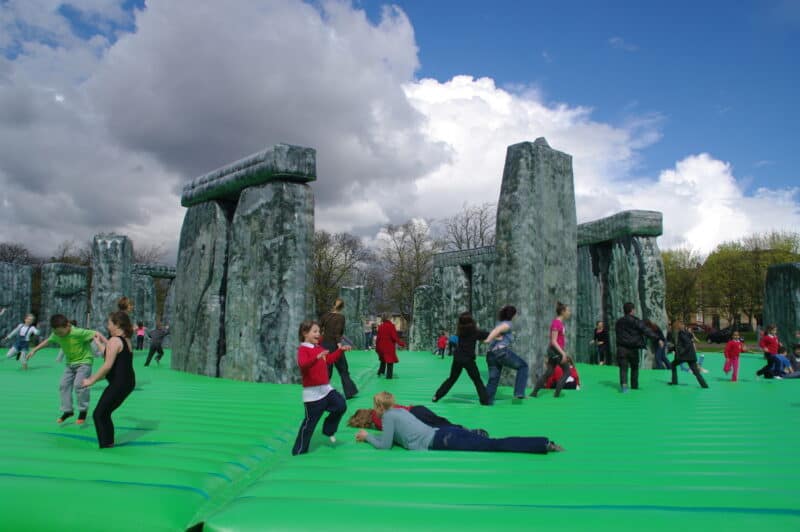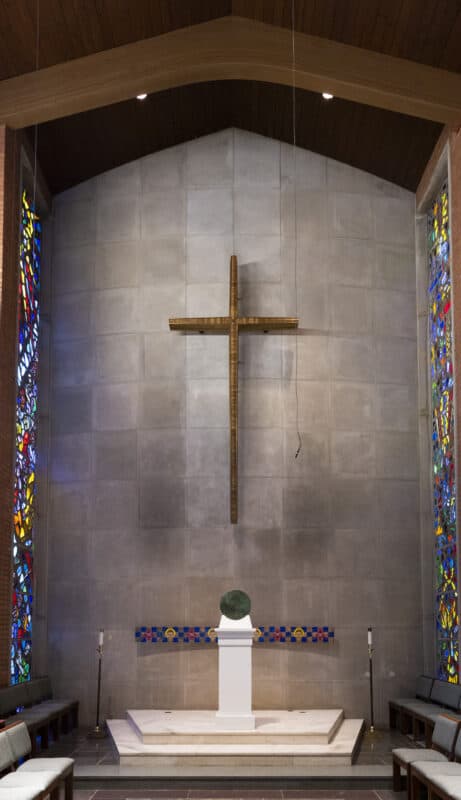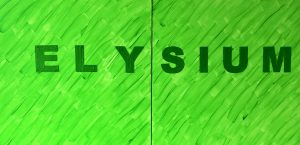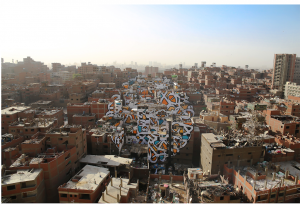
Image:Red Rose True Love Fisting
FAD: If you weren’t an artist, what else would you be?
Michael Petry: Dead
FAD: What was the most intelligent thing that someone said or wrote about your work?
MP: Michael Petry: Deviating From the Standard
by Eric Hormell Editor, Bibliography of the History of Art
Getty Research Institute
FAD: Do you care what your art costs?
MP: Most of my current work involves rather costly materials, leather, real pearls hard woods, and blown glass which is done for me in Murano or here in London, but is always a costly process. But these works are balanced out by a huge series called Tie A Knot In It made from various types of string or rope with little or no actual value. Sometimes I highlight the cost and make the viewer aware that the gallery is also a shop that sells luxe items – artworks, and other times the material is used to seduce the viewer into questioning what it is they are seeing and hopefully letting them see other layers, codes meanings inherent in the work. Other times the abject nature of the materials calls into question what is or can be seen as art.
It is not the cost or the price of a work that interests me but what the material is and how it might be used to make work that is of interest to me, and hopefully others. Of course all artwork exists within the broader notion of the market and even work only seen in or made for museums or alternative spaces has in effect been engaged with the market by denying it or sidestepping it. So sometimes I address it directly but I am always aware how lucky I am to be able to make the work I do.
FAD: Are you a political artist?
MP: In a way all artists are political, it just depends on whether you see that openly or not in the work. My work is very queer yet when you see it, it appears abstract and minimal. It helps if the viewer understand the references (art historical as well as queer) I am making and sometimes it is the title of works that leads you to a different sexual, or political view of the work. I have written a lot on this topic (Hidden Histories: 20th Century Male Same Sex Lovers in the Visual Arts, Artmedia, 2004) so won’t go into it in detail, but perhaps the most know work of mine that is obviously political came from my 2007 show at the Sundaram Tagore Gallery (my New York representation) called America the Beautiful, a visually minimal body of work that has been seen as more queer due to the date exhibited, shown in the context of the waning Iraq War. All the works were red, white or blue or a combination thereof. While the title was based in commentary on the then state of America, the title was purposefully ambiguous.
All the works made coded reference to very hot topics of the day before the 2008 election. I think my gallerist was very brave to put the show on even though all the objects were very beautiful, the US was still in the grips of Bush induced fear and many of the works in the show were blogged about in detail, and mainly incorrectly.
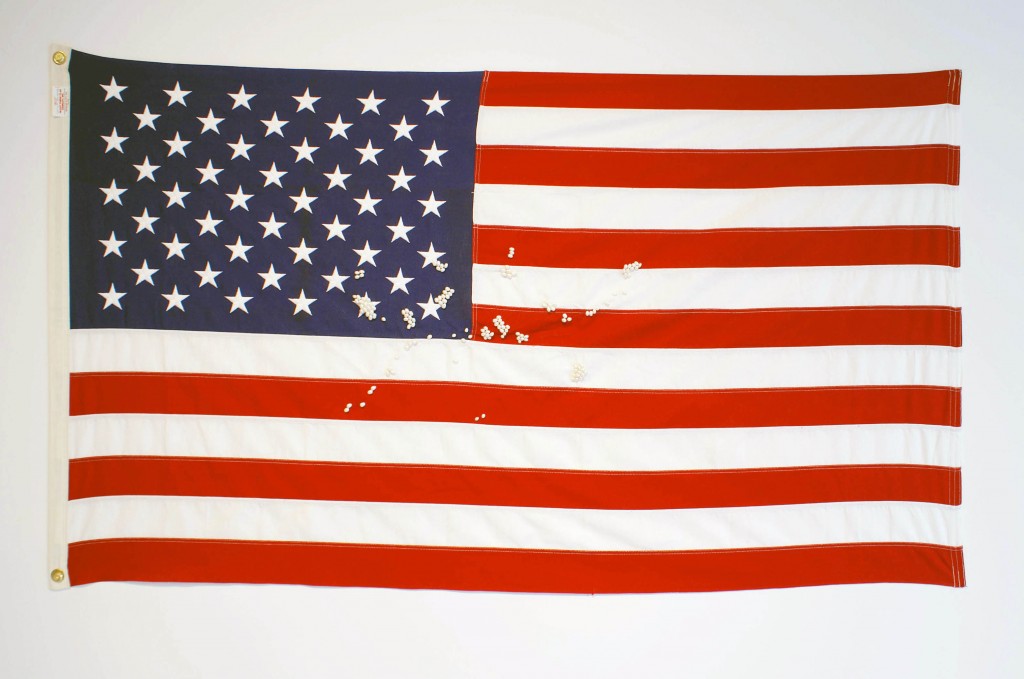
Image:Monument to the Unknown Soldier:Portrait of an American Patriot
The major work was called Monument to the Unknown Soldier: Portrait of an American Patriot and it caused a lot of upset. It extended my FairyTales series, but used for a background a real American flag that flew over the US Capital (documentation was provided).
The image sewn onto the flag is an abstract burst of freshwater pearls. The pattern was a ‘cumshot’ of semen on paper, given to me by a gay US soldier, who had to remain unknown, as gays were still banned from the US military. If his actions and status had been discovered, the soldier could be imprisoned, ejected from the military and would have lost his pension, yet he honourably served in Iraq on several occasions, and many who would have hounded him out of the Army would have called him a hero. I am sworn to secrecy over his identity, even though the Don’t Ask Don’t Tell laws have just been overturned. But the law is still in contention and many of the new right wing Congress men and women want to overturn the bill or introduce another to ban LGBT from openly serving. So it is still in the political sphere.
The work entered the domain of the web and attracted misinformation where it was alleged, for example, that he had ejaculated onto the flag (which he did not) and a storm grew over the appropriateness of his participation in such an artistic endeavour. The act of writing (on the web) collided with the actual making of the work. No matter how much information about its genesis would (or will) convince those who want (for their own political agendas) the flag to be seen as despoiled, even though it wasn’t in actual, material fact. In the American military to despoil a flag is seen as sacrilegious, such is the reliquary nature of it. The title, referring to the “Unknown Soldier”, another symbol of veneration, also caused upset.
The visually abstract works presented in America the Beautiful became politicised by the timeframe when shown. In the future they may only be seen as objects whose cultural resonances are less problematic. The work entered the political debate, as my research is echt political: the recovery of same-sex history within a contemporary art world – which has many forces (curatorial, economic and political) seeking to repress it. We even had a collector who wanted to buy it for the Whitney but they were too afraid to accept it, which is a shame as it would have been perfect shown next to the Jasper Johns’ Flags that are equally abstract and queer.
FAD: How do you start the process of making work?
MP: My work is also often (but not necessarily) sited, and often is initiated by museum commissions, where I want to take in the physical space where any works will be shown. If I am asked to make an installation the original architecture is very important like in my work Golden Rain commissioned for Stavanger 2008:European City of Culture.
Five artists were each give a lighthouse on the coast of Norway to make anything we wanted. Pipilotti Rist made a video projection in the base of her not too tall structure (2 stories), but I chose a very large 6 story lighthouse and hung the works all the way down the centre.
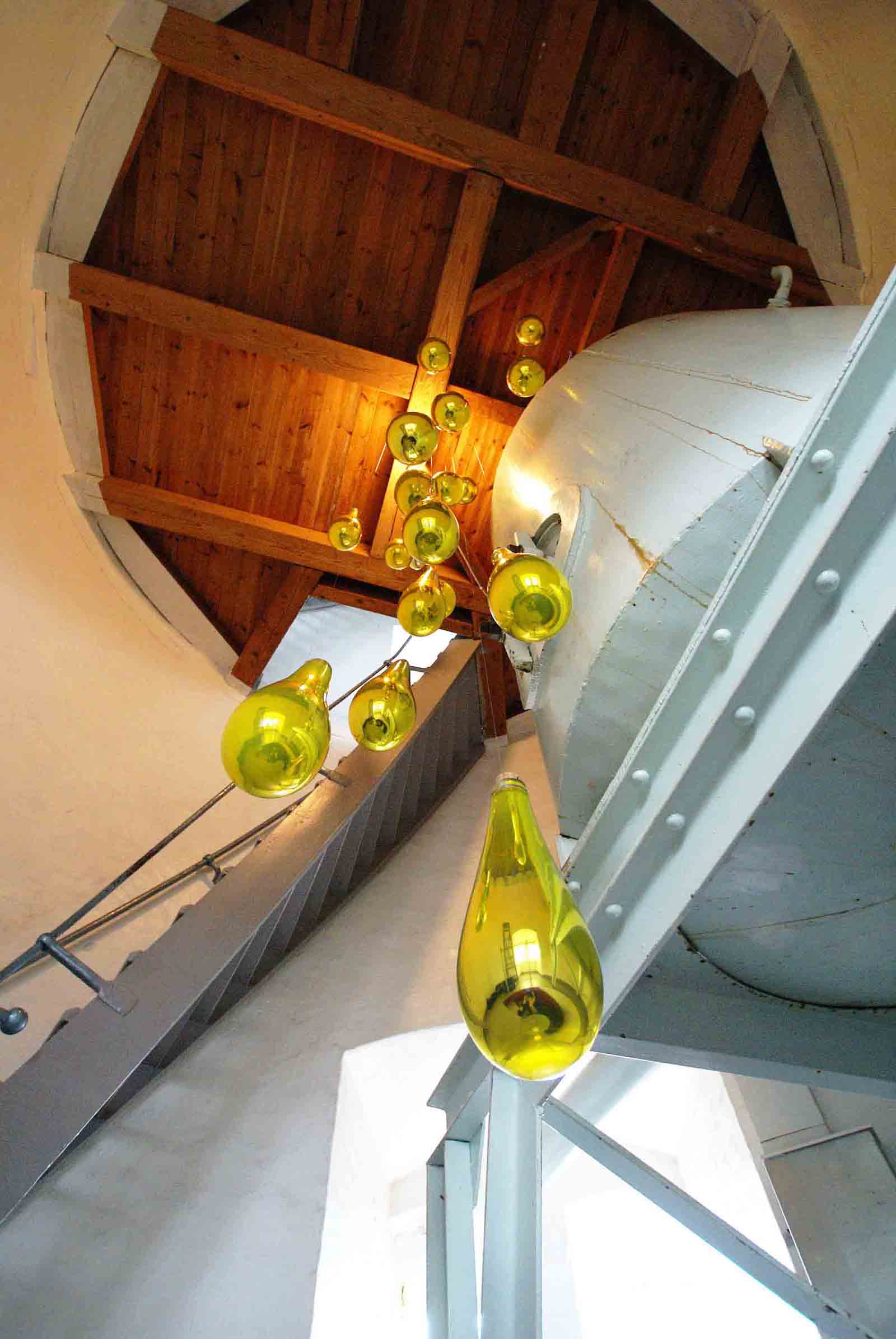
Yet this work will be re-installed at my one man show next year The Touch of the Oracle at the Palm Springs Museum and it will use the same 100 mirrored glass vessels but in a very different formation that will respond to that architecture.
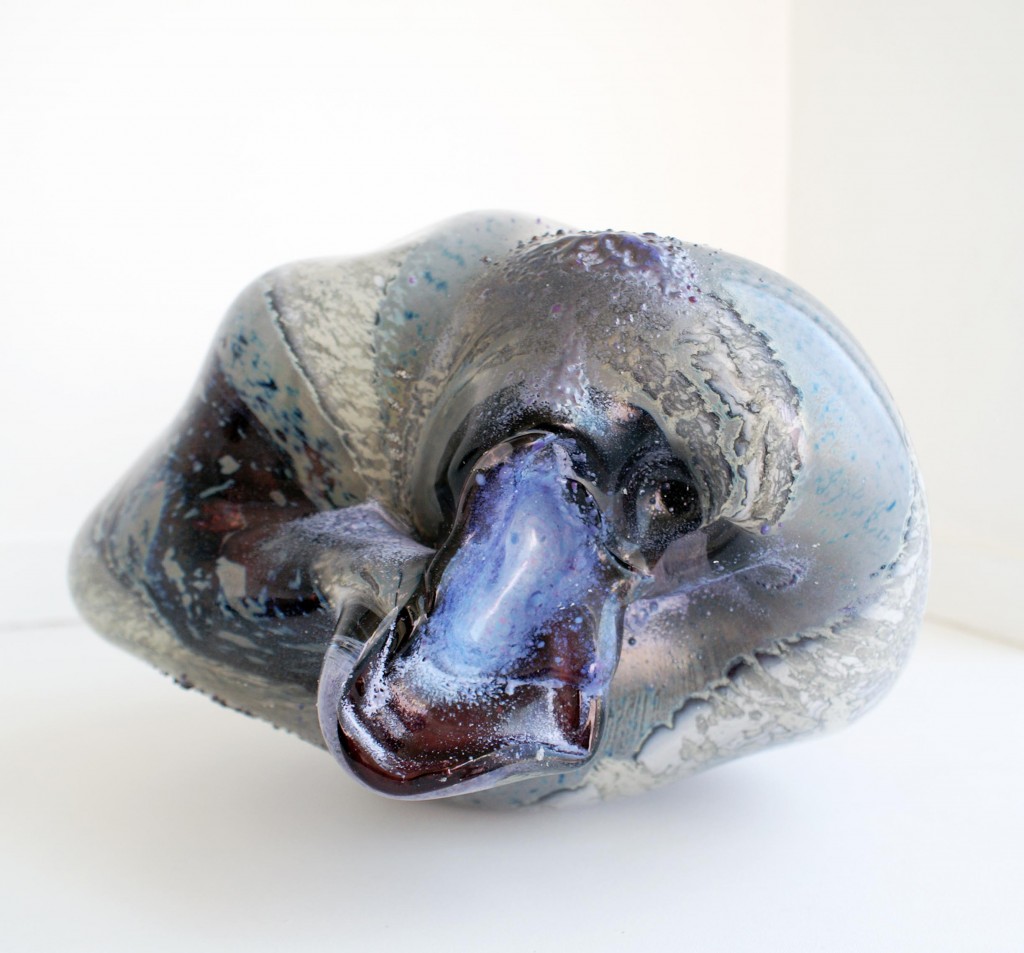
I will also make a very large new work Joshua D’s Wall, which references the museum’s actual location near the Joshua Tree dessert. This work will be made up of 250 glass boulders made at the Berengo Studio in Murano (Venice) but is again designed to take on a different form wherever else it might go.

So it really depends, because I also make smaller – what might be called studio pieces and those come from my interest in writing, research, and my queer political stance. The smaller works shown in Part 1 of my Sir John Soane residency are all from the Bare Back Lover series which when I started making them, was a conscious attempt on my part to make small sculptural works. I was not sure I could make glass pieces that were not installations, so I really pushed myself to do something small. Oddly I had no idea if anyone would want to show them much less buy them. The funny thing is that when I showed the first ten or so to my London Gallerist Chris Westbrook, he went crazy for them and wanted to show them immediately (we waited for about 8 months), and people have really connected with them, and many people have wanted to own them, which is great but was never the motivation. We borrowed back quite a few from London collectors for the show and many of the warders told me how members of the public would touch them (even though this was not allowed) and tell them how they really coveted them. My ex, who when we were together never really liked or maybe connected with my work, but who is still a very close friend, asked me to ‘lend’ him one, which made me really happy.
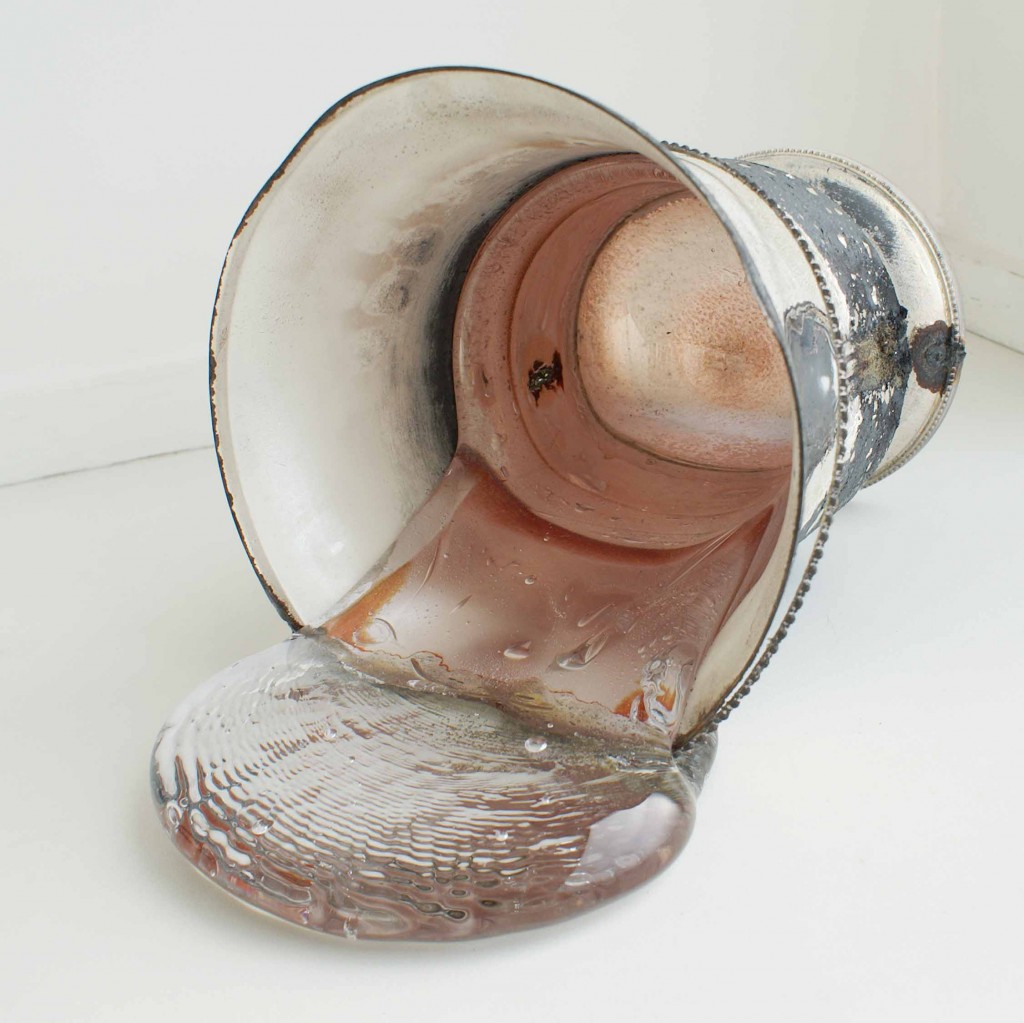
But as much as making something small, I wanted to make works that were relevant and edgy, they BBL pieces are about hot fluid in open receptacles – that is molten glass in the metal (or a very good description of unprotected sex).
Many of my studio works are based in an exploration of the wider sexual world we inhabit as well as the e-version. I make a lot of work that is connected with or generated from my interactions with people on the web. I have done a series of e-portraits of pearls on leather like the Monument piece, where I have asked people to send me a portrait of themselves as an ejaculate. The image is then sewn onto the leather. They are very abstract and beautiful and at the same time might not be from the people I was chatting with, but that is the point, the truth on the net is a very different one from the physical world. I have extended the conversation to include portraits of women as well in my The Revenge of the Florist series, where I have asked men and women, gay and straight, to send me an image of their anus which is then blown into a large glass vessel filled with specific flowers.
The flowers and the colour of the vases are important as they speak of different sexualized codes. The flowers refer back to the Victorian language of Flowers where each bloom meant something i.e red roses meant true love, and if you gave a woman sunflowers it meant you thought she was haughty.
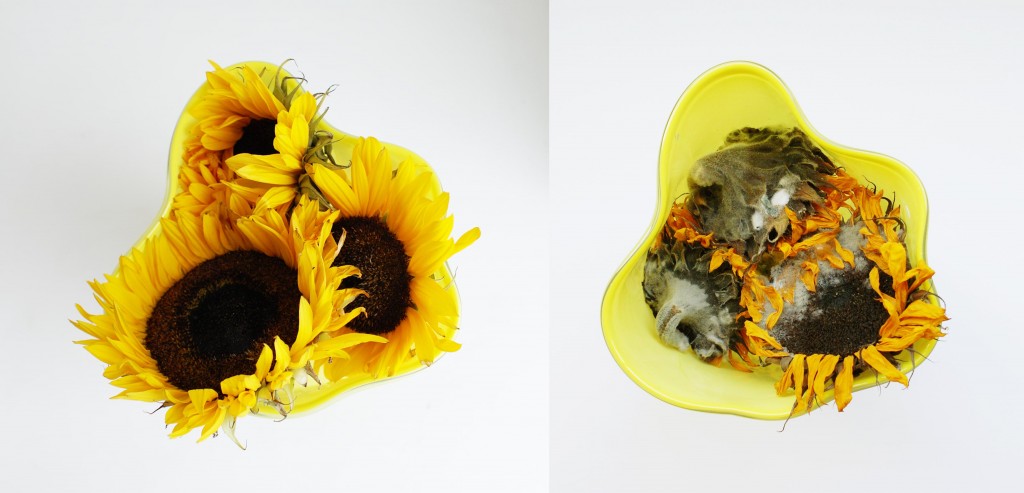
Equally the colour refer to sexual fetishes, red for fisting, yellow for piss, etc. and the colour I use for the portrait came from their fetish. The shape of the mouth of the vessel is the portrait element, and the anus is the only sexual part of the body that in close-up looks the same for a man or a woman.

The anus is also such a taboo for us in the West and seen as dirty or diseased because of AIDS, as much as by Victorian values, so the pieces work on many levels and then they are also nature mortes. That is they are still lives, paintings in four dimensions, in that the flowers slowly rot away (see attached), reminding us of our own mortality – yet without the usual Christian notion of morality attached to it. So even these works have a political edge to them. They remind us that there are always reactionary forces that wish to stop not just artists, but everyone from living their lives, enjoying the short time we have on this planet, and they remind us to question those who claim authority (especially moral authority) over our lives. These works remind us that death is inevitable and that like the flowers we all rot. If religion helps someone look into the abyss of death that is fine with me, but I would ask them not to put their religion on my body.
FAD: If Moma and the Tate and the Pompidou wanted to acquire one of your works each, which would you want them to have?
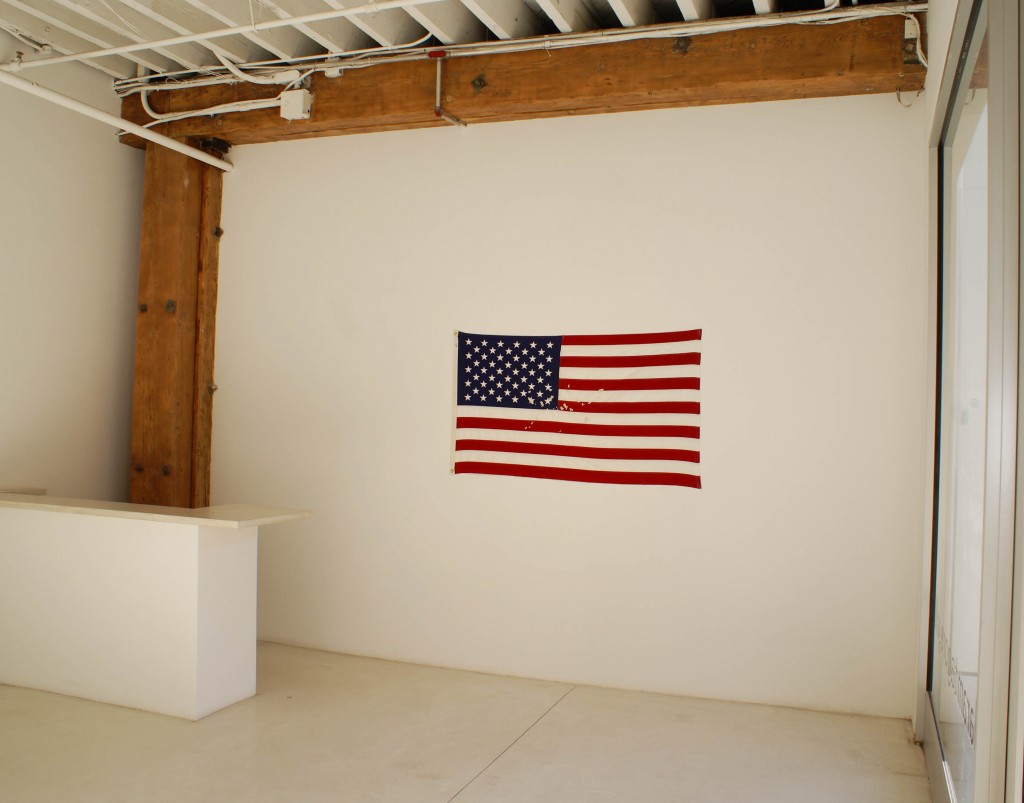
MP: MOMA (NY) Monument to the Unknown Soldier: Portrait of an American Patriot as the Museum of Arts and Design in NY already have one of my biggest glass installations – The Treasure of Memory.
The TATE – In the Garden of Eden – a large installation of 12 wooden pieces that are suspended from the ceiling and are polished like skin, and sway when you touch them, and you are allowed to do so – I like the idea of people touching them at the TATE, the work is also very rude and might make people laugh, which would be a good thing.
For the Pompidou I think I would want them to have some of the works from the True Love show (these are the BBL pieces) –it is the city of light, and love and all things ridiculously romantic – so something like that or more likely for all three of them I would make them new .
FAD: What’s next for you?
MP: I have my new book – The Art of Not Making: the new artist/artisan relationship coming out in April for Thames & Hudson, and then in June I am in the Glasstress exhibition, one of the Official Shows for the Venice Bienalle, the work is called Lingams for the Chairman. I like to use beauty as a visual entry into the work, it seduces you a bit and lets you take in the conceptual and erotic elements without punching you in the face.


